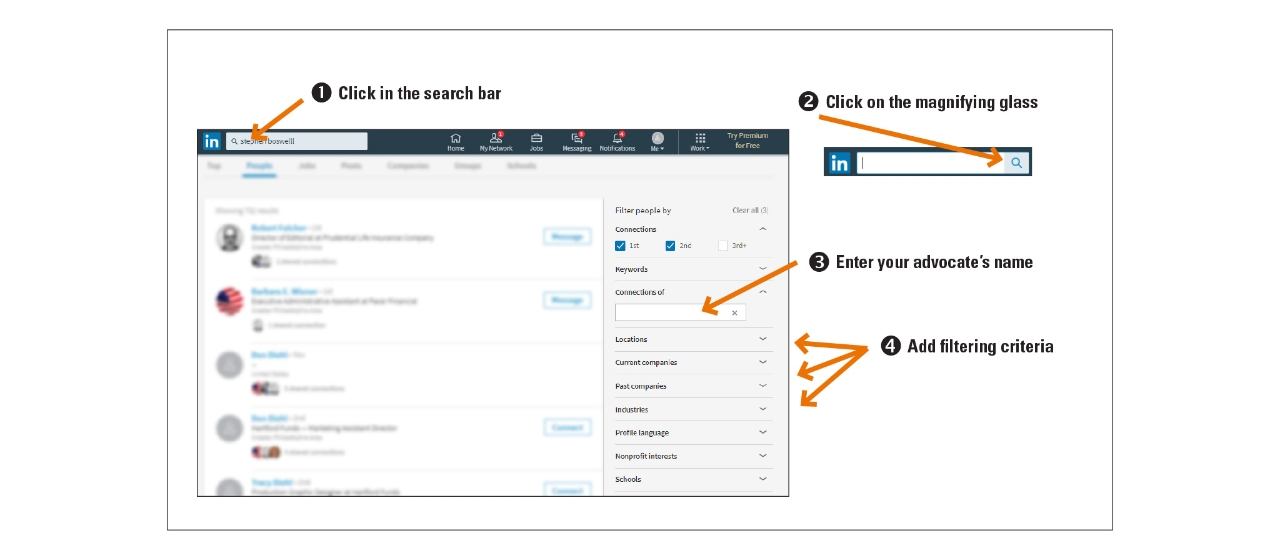When a friend gives us a strong recommendation to try a new restaurant, we usually give it a try. Why? We value our friend’s opinion. The same principle applies when one of your clients introduces you to one of their contacts. That contact may be more willing to meet you, and potentially do business, because of your mutual friend’s favorable opinion of you. This article outlines how you can use what Oechsli calls an Advocate Search on LinkedIn to get more introductions from clients.
What’s an Advocate Search?
An Advocate Search strategy uses LinkedIn to search your clients’ connections for people you’d like to meet, then asking your client for introductions to those connections. Oechsli says that the Advocate Search is one of the most practical ways to use LinkedIn to gain new clients.
Why Advocate Searches are so practical
You’re meeting with clients every day. Spending five minutes doing an Advocate Search before each meeting is a great way to find prospects. Since you already have a relationship with your clients, there’s a high probability that they're willing to introduce you to one of their connections.
What makes introductions so powerful is the credibility transfer that occurs when a client introduces you to one of their connections. From the perspective of the prospect, the introducer sees your meeting as mutually beneficial.
Despite the prospecting potential of Advocate Searches, many financial professionals aren’t using this technique. We polled nearly 300 financial professionals during our LinkedIn webcast and 82% said they had never done an Advocate Search.







